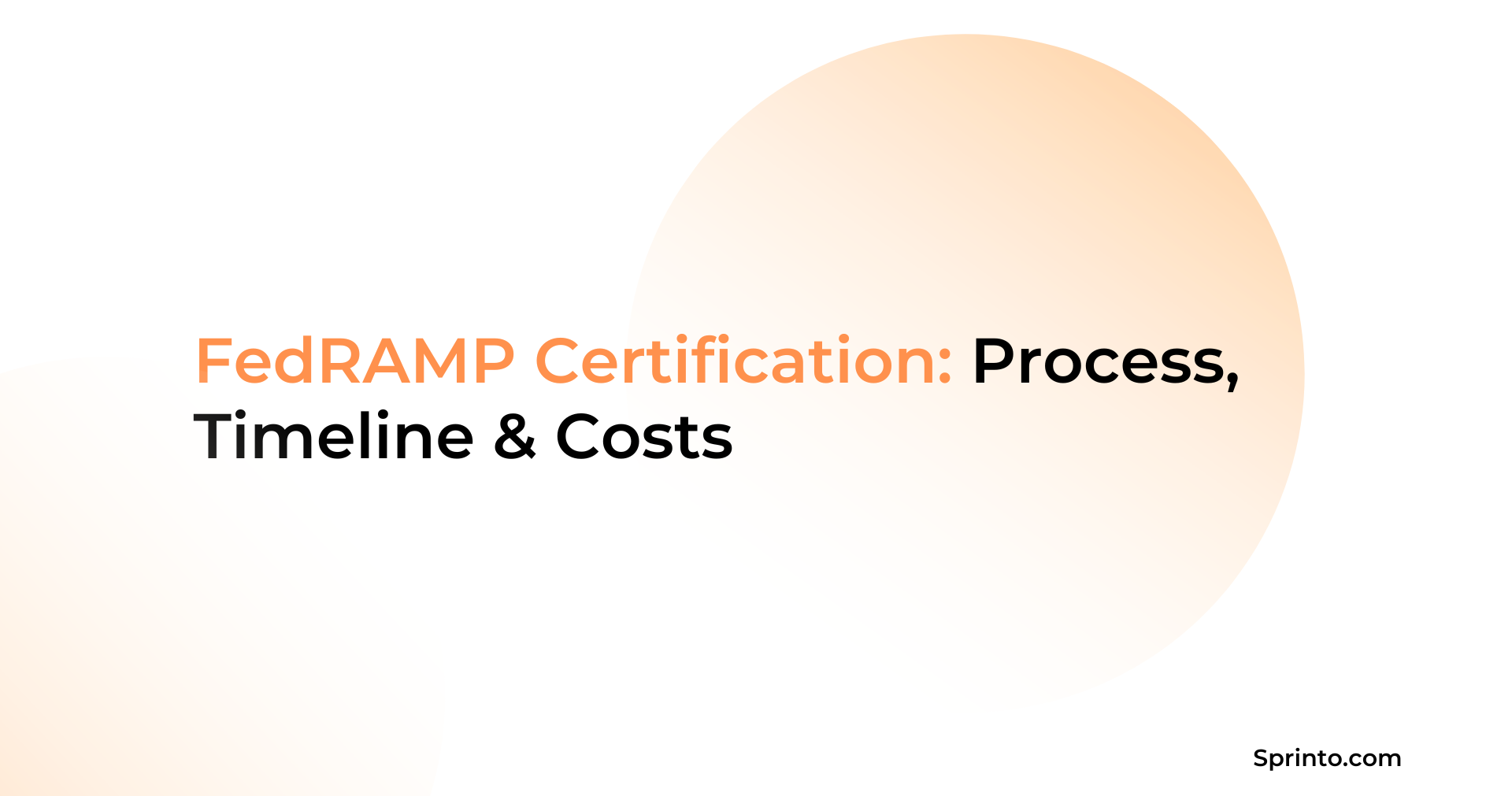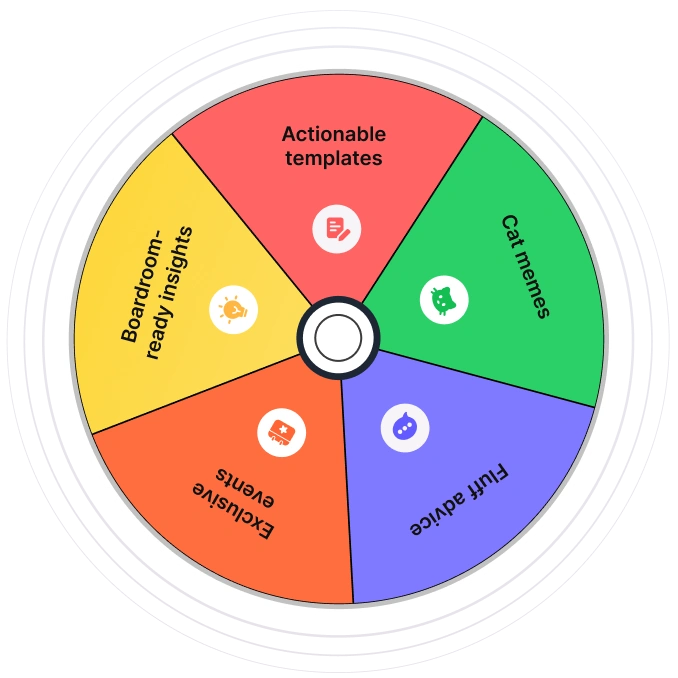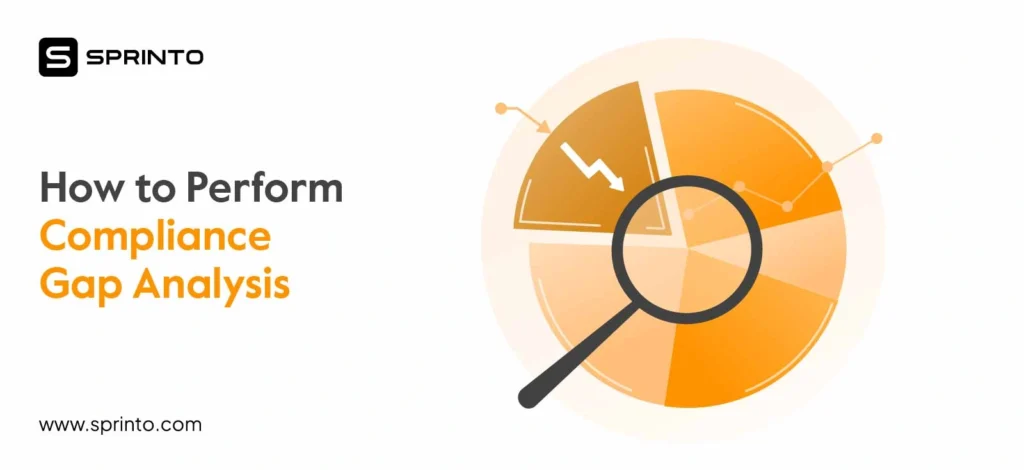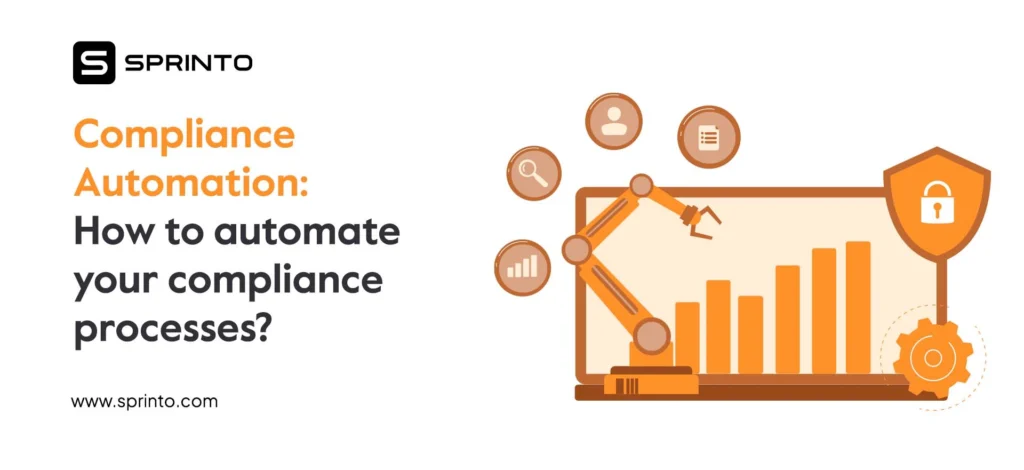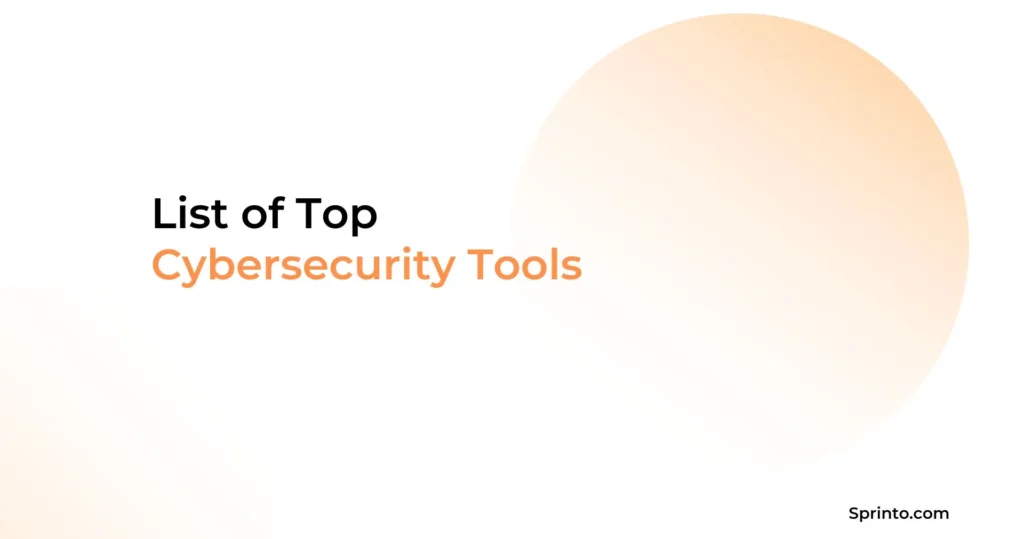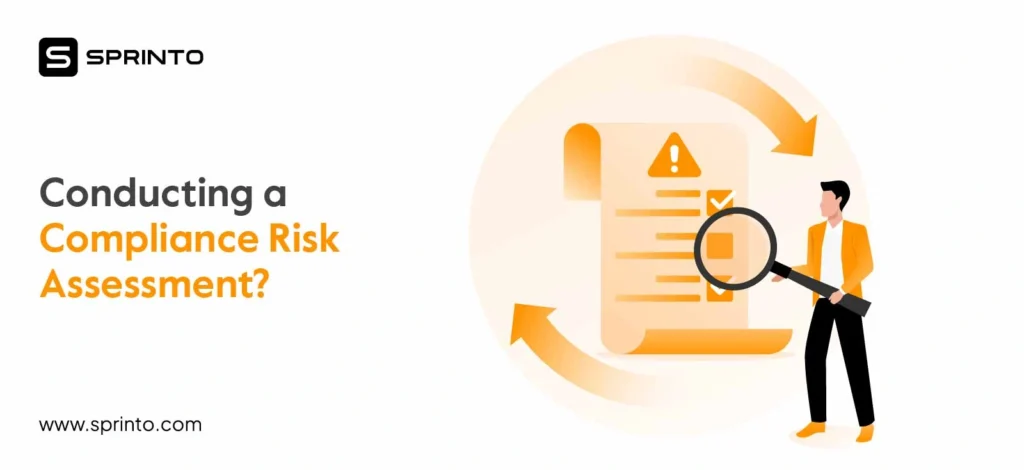In 2020, attackers exploited a compromised software update to infiltrate multiple U.S. federal agencies, including the Treasury and Commerce Departments. It exposed sensitive data and led to a sweeping audit of third-party vendors and cloud providers.
The incident highlighted how misconfigured or poorly vetted cloud systems can quickly escalate into a national security vulnerability. This is why standardized frameworks such as FedRAMP became essential.
For Cloud Service Providers (CSPs), FedRAMP is a gateway to the federal market, and a signal that their platform meets the highest bar for trust. In this guide, we’ll discuss more about what FedRAMP is and why it matters, its key components, the certification process, costs, and more.
| TL;DR FedRAMP is a standardized program that rigorously assesses, authorizes, and continuously monitors cloud services to protect federal data. Achieving FedRAMP authorization is essential for CSPs to work with US federal agencies, offering market access, and demonstrating strong security. While requiring significant time (12-18 months) and financial investment, FedRAMP’s ‘do once, use many times’ model streamlines security assessments for multiple agencies. |
What is FedRAMP certification?
FedRAMP certification is a rigorous and standardized evaluation that assesses, authorizes, and monitors the security of cloud services. It was established in 2011 by the U.S. Government to ensure that all Cloud Service Offerings (CSOs) meet the security baselines for secure adoption of cloud services across federal agencies. It builds upon the security controls already mentioned in the National Institute of Standards and Technology (NIST) Special Publication 800-53.
Who needs FedRAMP, and why does it matter?
Before FedRAMP, companies conducted their own security reviews, leading to inefficiencies and inconsistencies. With FedRAMP, a revolutionary ‘do once, use many times’ model was introduced: a single security assessment by multiple federal bodies.
Understanding and getting a FedRAMP certification is essential for any company that wants to work with the federal government. Any cloud service handling federal data or supporting mission-critical federal systems must be FedRAMP authorized, a mandate from the Office of Management and Budget (OMB).
The primary entities that must get a FedRAMP Certification are:
- CSPs: Any company offering Software-as-a-Service (SaaS), Platform-as-a-Service (PaaS), or Infrastructure-as-a-Service (IaaS) solutions.
- Federal Agencies: FedRAMP-authorized cloud services are required by agencies when deploying cloud-based solutions that handle unclassified federal data.
- Federal Contractors and Subcontractors: Bodies that use external cloud service providers to store and process federal data.
Importance of FedRAMP
FedRAMP is a strategic advantage for both Cloud Service Providers (CSPs) and federal agencies.
For CSPs, FedRAMP opens doors to the U.S. federal market by allowing them to serve multiple agencies with a single authorization. It strengthens overall security posture, boosts market credibility, and creates a competitive edge. Plus, the rigorous controls often overlap with other frameworks, laying a strong foundation for broader compliance efforts.
For federal agencies, FedRAMP delivers consistent security baselines that reduce procurement friction and accelerate cloud adoption. With standardized risk assessments and shared authorization packages, agencies benefit from faster onboarding, improved collaboration, and more efficient use of time and resources.
Read More: FedRAMP Vs. SOC2
3 crucial components of FedRAMP
To navigate FedRAMP, you’ll need to understand its interconnected components:
- FedRAMP Program Management Office (PMO): Housed within the General Services Administration (GSA), it is responsible for managing the program’s day-to-day operations. It develops the policies, procedures, and templates (like the System Security Plan – SSP), provides support to CSPs, and manages the FedRAMP Marketplace, which lists all authorized CSOs.
- Joint Authorization Board (JAB): It’s FedRAMP’s primary governing body, comprising Chief Information Officers (CIOs) from three key federal agencies: The Department of Defense (DoD), The Department of Homeland Security (DHS), and The General Services Administration (GSA). It defines FedRAMP security authorization requirements and baselines (Low, Moderate, High) and accredits Third Party Assessment Organizations (3PAOs).
- Third Party Assessment Organizations (3PAOs): They are independent, accredited cybersecurity firms that impartially evaluate how a CSP’s cloud service offers against FedRAMP’s rigorous security controls. They conduct Readiness Assessments and perform the Security Assessment of the CSO.
How to get FedRAMP certified?
FedRAMP Certification is also referred to as FedRAMP Authorization, especially in government circles. This relates to the authorization process to gain a FedRAMP certificate: receiving an ‘Authority to Operate (ATO)’ from a federal agency or a ‘Provisional Authority to Operate (P-ATO)’ from the ‘Joint Authorization Board (JAB)’.
The entire FedRAMP Certification process takes place in 4 phases:
Phase 1: Laying the groundwork
The first phase takes about 1 to 6 months, depending on your orgaization’s present security maturity.
Step 1: Understand FedRAMP baselines and scope
Firstly, you need to determine your CSO’s impact level and classify it as FedRAMP Low, Moderate, or High, using FIPS 199 and NIST SP 800-60 guidelines. Next, you need to identify the scope of your CSO, identifying all components (applications, infrastructure, data flows, personnel) that will be part of the FedRAMP assessment.
Step 2: Conduct a gap analysis
Before diving into documentation, perform a thorough gap analysis against the chosen FedRAMP baseline controls (NIST SP 800-53).
Step 3: Remediate and implement
Based on the gap analysis, implement or improve the necessary security controls (for e.g. configuring systems, developing new policies, deploying security tools, training staff).
Step 4: Engage with a 3PAO
Select an accredited 3PAO from the official FedRAMP Marketplace, your independent auditor throughout the process.
Step 5: Achieve ‘FedRAMP Ready’ (Recommended for Agency ATO, Mandatory for JAB P-ATO)
Your chosen 3PAO will conduct a Readiness Assessment to determine if your CSO is adequately prepared for a full security assessment.
Note
The FedRAMP Ready status acts as a pre-authorization step where a CSP works with a 3PAO to complete a Readiness Assessment Report (RAR). Once this is approved by the FedRAMP PMO, the CSO is listed as ‘FedRAMP Ready’ on the marketplace. While this is not an authorization, it signals to agencies and the JAB that the CSP is ready for a full-assessment, making it easier to find a sponsor.
Phase 2: Documentation and security assessment
This phase takes around 6 to 9 months.
Step 1: Develop the System Security Plan (SSP)
The SSP describes your CSO, its security controls, how they are implemented, and how they meet FedRAMP requirements. Along with this, you’ll need separate documents:
- Security Assessment Plan (SAP), developed by the 3PAO
- Plan of Action and Milestones (POA&M)
- Policies and procedures, incident response plans, configuration management plans, etc.
Note: The FedRAMP PMO provides templates for all required documents on FedRAMP.gov.
Step 2: Full security assessment by 3PAO
The 3PAO executes the SAP, conducting a thorough, independent assessment of your CSO. the 3PAO generates a comprehensive Security Assessment Report (SAR), detailing their findings.
Step 3: Remediation of findings
Based on the SAR, if there are any vulnerabilities or non-conformities, you’ll need to address them.
Phase 3: Review and approval
This phase can take around 2 to 4 months.
Step 1: Choose your authorization path
In this phase, you can choose either of the following two paths:
- Through ATO: This is the most common path where a federal agency acts as a sponsor for the CSP’s cloud service it wishes to use. It reviews the CSP’s security package and, if satisfied, issues an ATO. This is a more accessible way and doesn’t require the competitive selection of the JAB process. Additionally, it helps build a direct relationship with the federal agency. However, each agency will need to review the authorization.
- JAB P-ATO: In this path, JAB reviews the security posture of the CSO and grants a P-ATO. A federal agency then reviews the P-ATO and grants its own ATO. A JAB P-ATO holds a lot of weight since it’s approved by a board representing major federal departments. It also signals to the entire federal market that your CSO meets stringent government-wide security standards. However, the JAB only selects 12-15 CSPs every year. Moreover, the requirements and timelines are stricter.
Step 2: Package submission and review
Once the security package is completed and accepted by the sponsoring agency or JAB, it is formally submitted to the FedRAMP PMO. The PMO performs its review to ensure the package meets FedRAMP requirements.
Step 3: Authorization decision
If the review is successful, the authorizing body will issue you the official ATO or P-ATO. Your CSO will then be listed on the FedRAMP Marketplace as ‘Authorized.’
Phase 4: Continuous monitoring
Authorization is the beginning of a continuous process. The CSPs must maintain their security posture with the following activities:
Step 1: Monthly vulnerability scans: Ensure new threats are identified and addressed in real-time.
Step 2: Annual penetration testing: Test for exploitable weaknesses at least once a year to validate security controls.
Step 3: Yearly assessment by a 3PAO: A subset of controls must be independently assessed each year to maintain your FedRAMP ATO.
Step 4: Ongoing POA&M updates: Keep the Plan of Action & Milestones current to reflect remediation progress and new risks.
Step 5: Prompt incident reporting: Report security incidents as per FedRAMP timelines and protocols.
Step 6: Change management reviews: Evaluate and document any system architecture or component changes that could impact compliance.
Note
The CSPs must also submit monthly and annual continuous monitoring deliverables to the FedRAMP PMO.
Read More: 5 Must-Have Tools for FedRAMP Compliance
A breakdown of FedRAMP certification costs
FedRAMP costs typically range from $450,000 to over $2 million, covering pre-certification efforts, the certification process itself, and ongoing post-certification maintenance.
Here’s a breakdown:
| Phase and Step | Cost |
| Consulting Services (Gap Analysis, Advisory, Documentation Support) | $50,000 – $300,000+. |
| Remediation and Implementation Costs: | $50,000 – $500,000+. |
| 3PAO Assessment Fees | Readiness Assessment (RAR): $30,000 – $100,000.Full Security Assessment (SAR): $100,000 – $350,000+ (for Moderate/High, can be more). |
| 3PAO Annual Assessment Fees | $75,000 – $200,000+. |
Some of the factors that contribute to the cost are:
- CSP’s Current Security Maturity: Organizations with a mature cybersecurity program, existing compliance certifications (like SOC 2, ISO 27001), and strong documentation will likely move faster.
- Impact Level: FedRAMP High takes considerably longer than FedRAMP Moderate or Low due to the high number and complexity of controls.
- System Complexity: A more complex cloud offering (e.g., IaaS vs. a simple SaaS application) will require more extensive assessment and documentation.
- 3PAO and Agency/JAB Responsiveness: There can be delays based on the workload and responsiveness of the chosen 3PAO and the authorizing body.
- Remediation Efforts: Too many gaps identified during the gap analysis or 3PAO assessment will require more remediation time.
Fuel your FedRAMP journey: How Sprinto can help
A FedRAMP certification involves many documents, audits, and financial burdens. Sprinto eases the burden on CSPs and makes the path to compliance and authorization simpler and faster.
- Precision control mapping to FedRAMP baselines: Sprinto comes with pre-built programs and a common control framework that helps you identify gaps easily, provide a standardized interpretation of each FedRAMP control, and map other security frameworks to FedRAMP controls.
- Streamlining documentation: Sprinto automates evidence collection with its 200+ native integrations and open APIs. It also offers pre-built, customizable templates for essential FedRAMP documents, policies, and procedures, making the documentation process easier.
- Audit Preparedness: Sprinto continuously monitors your controls across all assets in real-time. Its real-time compliance dashboard helps you view your compliance posture, showing control health, progress, and areas needing attention.
- Integrations and Automation: Sprinto automates various compliance workflows, from employee policy acknowledgment and security training tracking to vulnerability assessments and change management. It also provides provides real-time alerts for failing controls or detected misconfigurations.
Frequently asked questions
1. How long does FedRAMP certification take?
The full FedRAMP authorization process is lengthy, typically taking 12 to 18 months on average. However, this timeline can vary, ranging from as little as 6-9 months for highly prepared organizations to 2 years or more for those starting with a lower security maturity or facing complex challenges.
2. How much does FedRAMP certification cost?
FedRAMP certification requires a financial investment that can range from $100,000 – $250,000 annually for low impact levels to $500,000 – $1,000,000+ for high impact levels.
3. What does FedRAMP certification mean?
FedRAMP Certification means that aCSO, provided by a CSP, has undergone a rigorous, standardized security assessment and has been deemed secure enough to handle U.S. federal government data.
4. How is FedRAMP different from RMF (Risk Management Framework)?
FedRAMP is the federal government’s standardized program for assessing and authorizing cloud services, built upon the principles of the NIST Risk Management Framework (RMF). While RMF provides a broad, six-step process for managing security risks across any federal information system, FedRAMP tailors this framework specifically for the unique context of cloud environments, introducing specific baselines and a ‘do once, use many times’ approach for cloud service providers.
5. Can individuals comply with FedRAMP?
FedRAMP is explicitly for CSOs, not for individual people. This is because FedRAMP evaluates the security posture of a system (a cloud environment, an application, etc.) and the organization’s processes around that system, not the personal qualifications of an individual.
Pansy
Pansy is an ISC2 Certified in Cybersecurity content marketer with a background in Computer Science engineering. Lately, she has been exploring the world of marketing through the lens of GRC (Governance, risk & compliance) with Sprinto. When she’s not working, she’s either deeply engrossed in political fiction or honing her culinary skills. You may also find her sunbathing on a beach or hiking through a dense forest.
Explore more
research & insights curated to help you earn a seat at the table.



